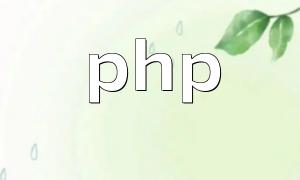In PHP programming, functions are a fundamental concept. Understanding the basic structure of a function is crucial for learning and applying PHP. A PHP function typically consists of the following four main components:
The function header is the declaration part of a function, usually consisting of the function keyword, the function name, and parentheses.
The parameter list is located inside the parentheses in the function header and is used to receive values passed to the function. A function can accept zero or more parameters depending on the specific needs.
The function body is the block of code containing the actual logic, located after the function header and enclosed in curly braces {}. The code inside the function body implements the functionality of the function.
The return value is the result returned after the function executes. Not all PHP functions need to return a value; only those that need to pass results back to the calling code require a return value. The return value is typically returned using the return statement.
Here is a simple example of a PHP function:
function sum(int $num1, int $num2) { return $num1 + $num2;}In this example:
These are the basic components of a PHP function. By understanding these basic structures, you will be able to write and use PHP functions more effectively.









